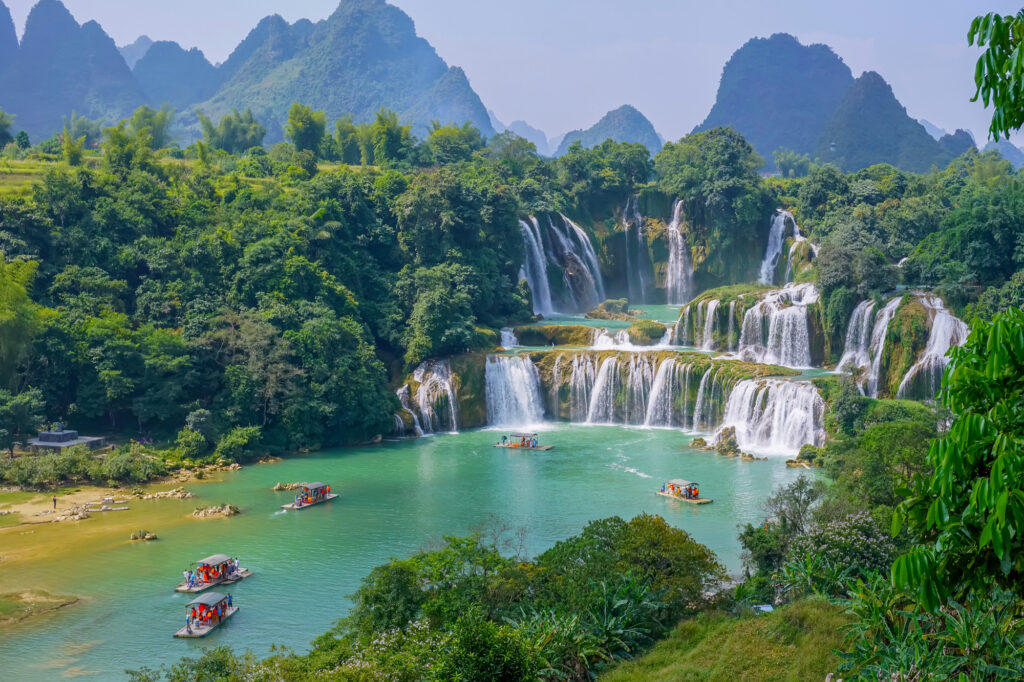 Vietnam is a country of contrasts—not only in its culture and landscapes but also in its climate. Stretching over 1,600 kilometers from north to south, Vietnam’s weather varies greatly from region to region and from season to season. Understanding this monthly weather breakdown can help you plan your perfect trip, especially if you’re considering booking a tour package for Vietnam. From beach escapes in the south to mountainous retreats in the north, let’s walk through the weather month by month to help you decide when to go—and when it might be best to wait.
Vietnam is a country of contrasts—not only in its culture and landscapes but also in its climate. Stretching over 1,600 kilometers from north to south, Vietnam’s weather varies greatly from region to region and from season to season. Understanding this monthly weather breakdown can help you plan your perfect trip, especially if you’re considering booking a tour package for Vietnam. From beach escapes in the south to mountainous retreats in the north, let’s walk through the weather month by month to help you decide when to go—and when it might be best to wait.
Vietnam’s Weather by Month: When to Go and When to Avoid
These are the details of Vietnam’s weather by month when you plan to visit:
January: Cool and Dry in the North, Sunny in the South
January is one of the most pleasant months to visit Vietnam. In the north, places like Hanoi and Ha Long Bay experience cooler temperatures ranging between 14°C and 20°C. The air is crisp and dry, ideal for walking tours or cruising through limestone karsts. Central Vietnam sees mild conditions with little rain, while the south—including Ho Chi Minh City and the Mekong Delta—enjoys sunny, dry weather, making it great for beach lovers.
February: Ideal for Exploring the Whole Country
February continues the trend of dry and comfortable weather throughout much of Vietnam. Northern cities like Hanoi can still feel cool, but the sun starts to peek out more often. Central Vietnam, including Hoi An and Da Nang, is still dry and sunny. The southern coast remains a beachgoer’s paradise. It’s also Tet season (Vietnamese Lunar New Year), so while the country is lively with celebrations, note that some services may be limited during the holiday week.

March: Warming Up with Pleasant Sunshine
March marks a subtle seasonal shift. The north starts to warm up slightly with more frequent sunshine. This is a great month for trekking in the northern highlands, such as Sapa. Central Vietnam remains dry and increasingly warm, while the south is still sunny and perfect for swimming, snorkeling, or river cruises. It’s a fantastic time to consider a full-length tour package for Vietnam that spans all three regions.
April: A Transition Month
By April, temperatures begin to climb, especially in the north and south. While northern areas like Hanoi become warmer and more humid, central Vietnam starts to see early signs of its rainy season by the end of the month. Southern Vietnam remains hot and dry, making it excellent for coastal getaways. April is a popular time for travelers, especially during the early weeks before national holidays begin.
May: Hot, Humid, and the Start of the Rains
May brings increasing humidity and heat throughout the country. In the north, temperatures can soar past 33°C, and the occasional afternoon shower may occur. The central region begins to see more frequent rains, especially by mid-month. Southern Vietnam also starts its wet season with regular afternoon downpours. However, mornings remain mostly clear, making early-day activities still enjoyable. This month typically sees fewer tourists, so if you don’t mind a little rain, you might find great deals from the best tour company for Vietnam.
June: Wet Season Kicks In
June marks the real beginning of the rainy season in most parts of Vietnam. The north becomes hot and stormy, with humidity levels climbing. Central Vietnam, especially cities like Hue, still sees decent weather with less rainfall compared to the north and south. The south experiences regular, short-lived but heavy afternoon showers. Despite the rain, lush landscapes come to life, and crowd levels are low, which can be ideal for travelers seeking a more peaceful experience.
July: Rainy but Not a Washout
July continues the rainy pattern, particularly in the north and south. Hanoi can be particularly hot and muggy, with frequent thunderstorms. However, central Vietnam becomes one of the driest regions during this month, especially areas like Nha Trang and Hoi An. This makes it a sweet spot for beach vacations or cultural explorations without the intense heat of earlier months.
August: Rain Still Dominates, Central Vietnam Still Shines
August is similar to July in weather patterns. Hanoi and Ho Chi Minh City remain hot and wet, but central Vietnam continues to enjoy clearer skies and moderate temperatures. It’s a good month to visit Hoi An’s lantern-lit streets or the beaches of Da Nang. While August may not be peak season, it can still offer a comfortable travel experience, especially for those avoiding tourist crowds.
September: A Sweet Spot in the North
September is an excellent time to visit northern Vietnam. After months of rain, the skies begin to clear, and temperatures start to drop slightly. Hanoi weather in September is pleasantly warm, averaging around 29°C, with fewer showers and fresher air. Rice terraces in Sapa reach their most beautiful state just before harvest, making it a fantastic time for photography and hiking. Central and southern Vietnam, however, still see ongoing rains, though they start tapering off by the end of the month.
October: Northern Autumn and Central Rains
October is one of the best months to explore northern Vietnam. The weather in Hanoi and surrounding regions is cool, dry, and comfortable—perfect for outdoor sightseeing. Sapa’s harvest season wraps up, but the landscapes remain stunning. In contrast, central Vietnam enters its wettest phase, often seeing typhoons and flooding, which can disrupt travel plans. Southern Vietnam begins to dry out gradually by late October.
November: Welcome to the Dry Season (Again)
November brings the return of the dry season in the south, with warm, sunny days and lower humidity. It’s an excellent time for river cruises in the Mekong Delta or beach escapes near Phu Quoc. Hanoi and the north continue to experience autumn-like conditions—mild and cool with golden sunlight. Central Vietnam, while still damp early in the month, starts to dry out by the end.
December: Festive, Cool, and Travel-Friendly
December is one of the best months to visit Vietnam, especially for a cross-country tour. The north is cool but not freezing, ideal for city strolls and cultural explorations. The central coast finally dries out, and the beaches become inviting once again. The south remains warm and dry, perfect for a holiday escape. Booking with the best tour company for Vietnam during December means comfortable weather, festive spirit, and scenic beauty rolled into one.
FAQs
What is the best month to visit Vietnam overall?
If you’re looking for balanced weather across the entire country, March and December are excellent choices. Both months offer pleasant temperatures, minimal rainfall, and good travel conditions in all regions.
Is September a good time to visit Hanoi?
Yes, Hanoi weather in September is warm, slightly humid, and much drier than the previous months. It’s a great time for city tours and nearby excursions like Ninh Binh or Ha Long Bay.
When should I avoid traveling to Vietnam?
July through October can be unpredictable due to monsoons and occasional typhoons, especially in central Vietnam. If you’re not a fan of rain or potential travel disruptions, these months might be best avoided.
Are Vietnam tour packages affected by seasonal weather?
Yes, tour operators often adjust itineraries based on seasonal weather patterns. Booking with an experienced provider ensures you’re guided to the best places for the time of year.
What’s the weather like in Vietnam during the summer?
From May to August, Vietnam experiences hot and humid conditions across most regions, with frequent rainfall. However, central Vietnam tends to be drier in June and July, making it more suitable for summer trips.
Final Thoughts
Vietnam’s diverse climate means there’s always a good time to visit somewhere in the country—it just depends on what you want to do. From lush green rice terraces in the north to sunny beaches in the south, every month holds something special. Whether you’re planning a short getaway or booking a comprehensive tour package for Vietnam, understanding the country’s weather by month helps you make the most of your journey. And if you’re still unsure, turning to the best tour company for Vietnam ensures your experience is smooth, enjoyable, and tailored to the season.

